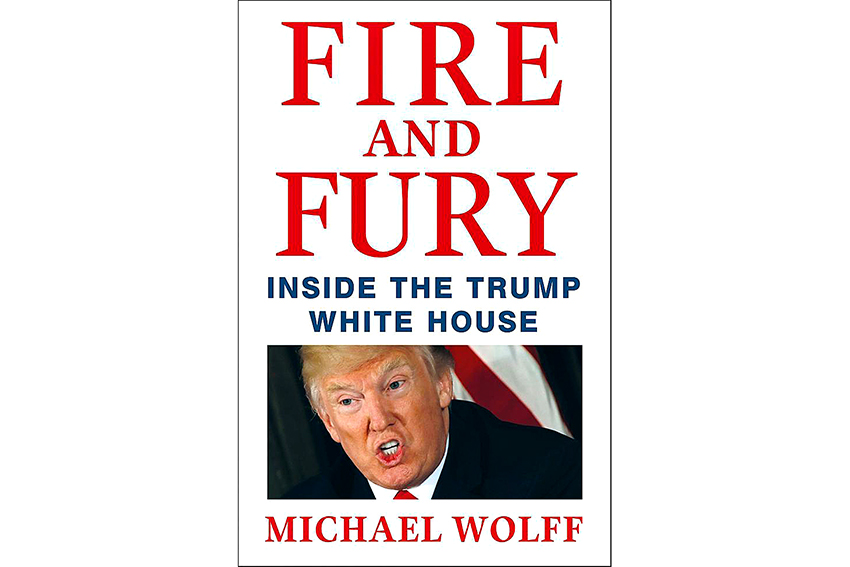There can really be only one word to describe “Fire and Fury: Inside the Trump White House:” interesting.
“Fire and Fury,” released Jan. 5, is USA Today columnist Michael Wolff’s tell-all book depicting these first nine months of President Donald Trump’s presidency. Trump’s cease and desist order to the book’s publisher only heightened its demand, leading to an early release date and massive sales.
Readers and politicians alike may have been disappointed by what they found between the pages of Wolff’s book as “Fire and Fury” is full of sloppy reporting. Wolff even mentions in the book’s author’s note that he allows “the players (to) offer their versions” of the truth, adopting a “fly on the wall” narrative style while leaving the reader to wonder how he got most of his information.
Wolff’s book reads more like Molière’s famous satire “Tartuffe” than a legitimate White House exposé. Wolff develops an exaggerated cast of characters, from the
childlike and possibly illiterate Trump, to the fallen hero Steve Bannon and the evil Jared Kushner and Ivanka Trump mash-up. Wolff tries his hardest to create caricatures of every prominent White House staffer, focusing more on personalities than actual events. So much for journalistic integrity.
Wolff begins his chronicle by insinuating that everything that has happened since Trump’s election is a result of the simple fact that he did not plan on winning. The book continues by unraveling the inner happenings of the White House through the power moves made by each of his characters, shedding an unpleasant light on everyone, it seems, aside from Bannon.
Though Wolff’s portrayal of the Trump presidency is interesting and at times downright comical, it is very difficult to discern fact from fiction. While everything seems possible, it fails to present enough evidence to be labeled as the truth. One must take the book for what it is: an interesting account, but probably not a wholly true one. Like a tabloid, it’s eye-catching, but little more than that.
Days before the book was set to be released, Trump’s legal team sent a cease and desist order to John Sargent, CEO of Macmillan Publishers, for “Fire and Fury.” Sargent later sent out a memo to the Macmillan employees in which he made it clear they would not stop the production of the book, arguing the First Amendment gives his company the freedom to publish Wolff’s book.
Trump and his hatred of what he has dubbed “fake news media” may have been what spurred the writing of a book within the first year of his presidency. Trump is often compared to Nixon, whose Watergate scandal was also written about and investigated during his presidency. While many books have been written about presidents, few have been published while said president is still in office, and fewer still are so ruefully, for lack of a better term, messy.
Wolff ends the book on an odd note, documenting Bannon’s fall from grace. He cites Bannon as the true leader of the “Trump revolution” and the hopeful president elect in 2020. This ending seems to firm up what feels like Bannon’s heavy hand in the rest of the book and may have you once again questioning how much of the book is authentic. While “Fire and Fury” seemed to stir President Trump into another Twitter tizzy, it will most likely not have any long-lasting repercussions.















